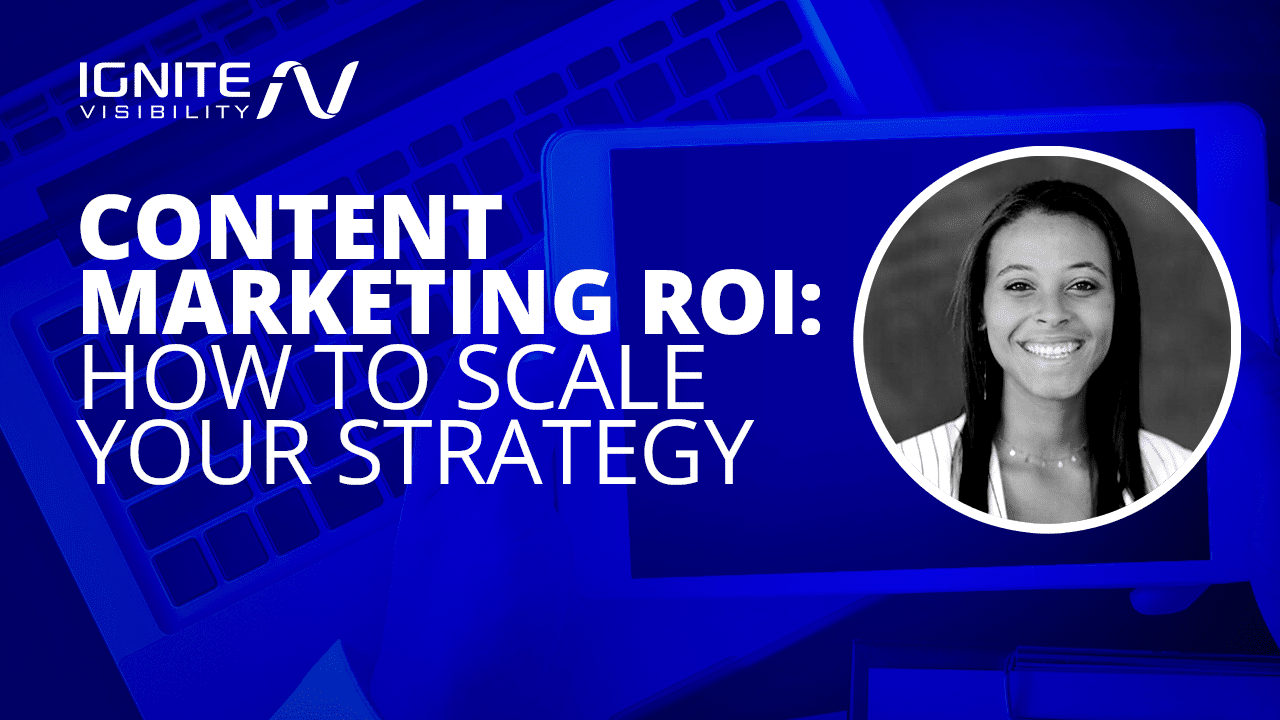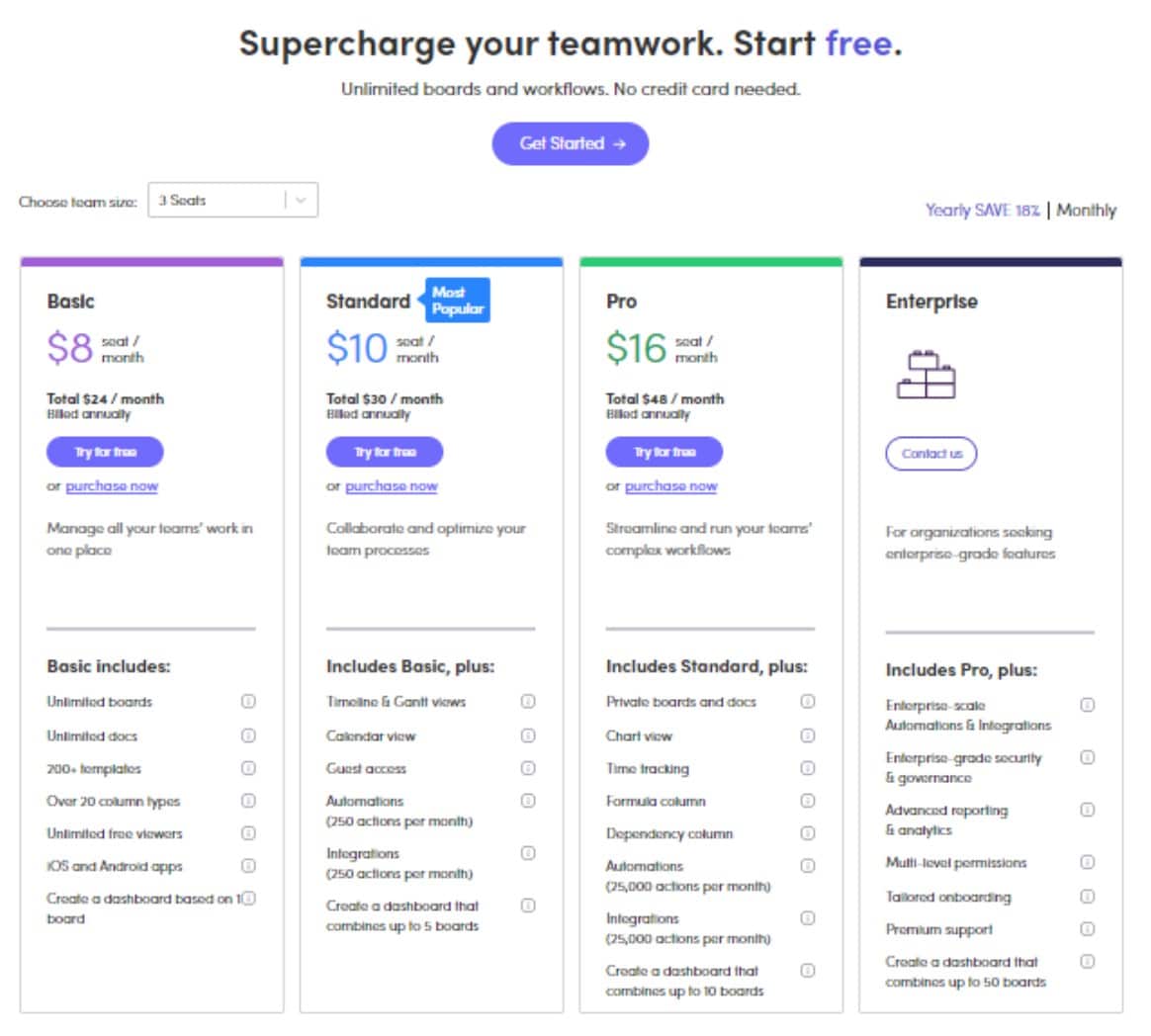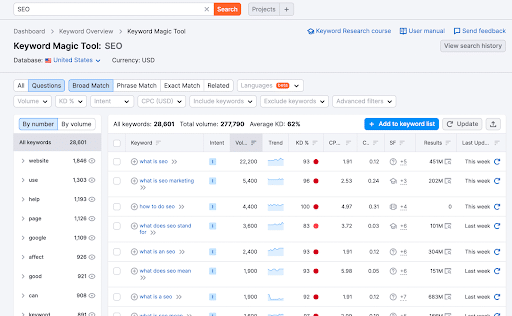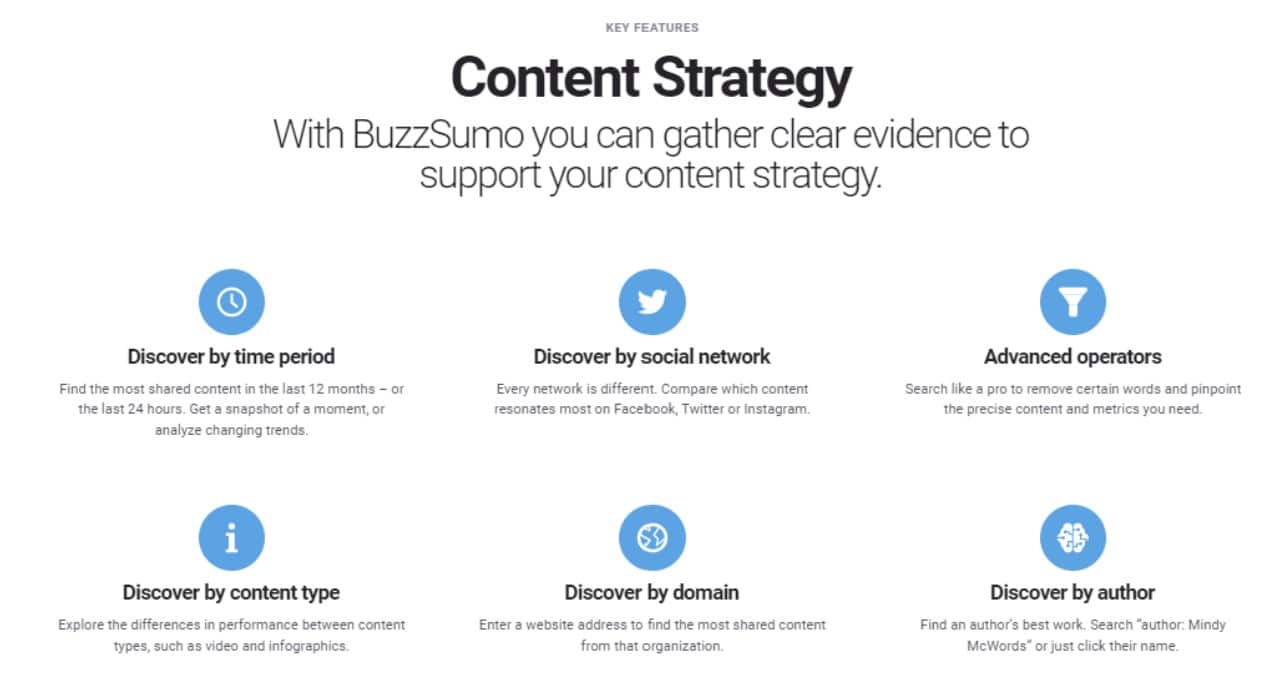
Is there value in content marketing?
Definitely.
As long as you have a strategy in place that helps increase your bottom line.
In this blog, I’ll explain how to scale your strategy using a tactical content marketing plan that improves your ROI.
Content Marketing ROI: Why You Should Care
Content marketing is expected to grow by $269 billion during the time period of 2020 – 2024, according to recent market research.
With expansive growth, your company needs to start scaling its content marketing strategy now.
And when I say scale your strategy, I mean getting the maximum ROI possible.
ROI is the return on investment, a ratio between your company’s income and investments. So, it makes sense that content marketing ROI is the revenue gained from content marketing as a percentage of the amount spent.
To calculate your content marketing ROI, take the revenue from your content, subtract your content marketing spend, and divide it by the spend.
The higher your ROI, the better.
Setting Your Content Marketing Goals
Before you jump into your strategy, you’ll need to decide what your content marketing goals are.
Your content goals should directly tie to your business’s overall goals.
Are you creating content for yourself? For B2B companies? What about B2C companies or D2C companies?
Are you looking to invest money and time to secure conversions? If so, what aspects of content marketing help your users navigate down the marketing funnel?
What type of content will help you secure deals? Is it educational? Video-based?
Once you’ve taken the time to figure out where your content marketing efforts fit in with your overall business goals, you’ll want to build your team.
Build a Results-Driven Content Marketing Team
You don’t always need a big team to be successful.
There are hundreds of studies that exist that revolve around a number. I’m here to tell you it’s all about the people you hire.
A good employee may be someone who clocks into work on time, follows deadlines, and is willing to help others.
However, a good employee doesn’t equal a good teammate.
Good teammates are often…
- Flexible – meeting their peers halfway to accommodate their needs
- Active Listeners – who put energy into other people’s ideas
- Problem-Solvers – that think critically about issues when they arise
- Effective Communicators – who pay attention to their teammate’s natural behaviors and preferred communication styles
- Stay Positive – bringing energy and enthusiasm to team meetings
If you can find good employees that are also good teammates, you’re ready to start building and refining your team.
Essential Roles for a Content Marketing Team
Copywriter – Copywriting is used to increase brand awareness and ultimately persuade a person or group to convert by taking a specific action. A copywriter crafts text in various forms such as blogs, infographics, social media posts, emails, landing pages, etc., to encourage an audience to take a specific action.
Editor – An editor’s job is to review and polish copy until it is ready to be published. Pieces of content often go through multiple revisions before they go live on any site.
Designer – A designer’s job is to bring creative, visual ideas and concepts to life. In content marketing, a designer can work on thumbnails, blog images, infographics, videos, and more.
Coordinator – A coordinator is often responsible for handling logistics and scheduling. In content marketing, a coordinator is often the person that communicates with copywriters, editors, and designers. They usually report to the content marketing manager for tasks and work to execute the set strategy.
SEO Strategist – An SEO strategist is responsible for executing the search engine optimization strategy for each piece of content. Their overall goal is often to increase website traffic by earning higher rankings in search engine result pages. This team member will ideally understand both on-page SEO to deliver keyword strategies and technical SEO to watch for issues in HTML.
Content Marketing Manager – A content marketing manager will be responsible for setting the overall content marketing strategy and pivoting when necessary. They should look to competitors and pay attention to industry news and trends to develop the organization’s strategy and pivot when necessary.
Once you’ve built your team, the next step to improve your content marketing ROI is to build a workflow.
What’s a Workflow?
In content marketing, workflows are essential. They help you keep track of each team member’s roles and responsibilities, as well as the progress on pieces of content.
The workflow starts with a strategy set by the content marketing manager. The strategy should be based on metrics and user research.
After the strategy is set, the content marketing manager should create a content calendar that outlines what topics will be covered, when the content will be posted, how it will be promoted, and how success will be measured.
Next, the SEO strategist should create a content brief. This brief should contain the following:
- 1 primary keyword
- 1 – 3 secondary keywords
- 5+ semantic keywords
- A word count range
- Internal links to related content
- External links to related content
Once the brief is completed, the SEO strategist will pass it off to the Coordinator. The coordinator should assign the piece of content to the writer, answer any questions, and agree upon a due date.
Once the writer has finished the piece of content, the Coordinator should assign the copy to an editor. The coordinator should also review the content and connect with the Designer to create unique images that fit in with the piece of content. Sometimes a simple image will suffice; in other situations, an infographic might be needed to explain a process.
Once the Coordinator receives all edits and graphics, they will work with the Content Marketing Manager to send any requests for revisions.
After everything has been approved, the coordinator will upload the content into the CMS, preview it, and publish it.
Once the content has been published, the Content Marketing Manager will work with the coordinator to promote the content.
Content Marketing Tool Selection
Tools are essential when it comes to calculating your content marketing ROI because you need to know what you’re spending your money on.
There are a ton of content marketing tools out there, so what should you choose?
We recommend tools to help you…
- Manage your workflows

Monday.com
- Create content briefs
- Google Docs
- Microsoft Word
- Complete keyword research
- SEMRush
- Ahrefs
- LongTailPro

Keyword Magic Tool on SEMRush
- Research competitors

BuzzSumo
- Create content
- Copy.ai
- MarketMuse
- Edit Content
- Hemmingway Editor
- ProWritingAid
- Grammarly

Grammarly Grammar Correction Tool
Before you choose any tools, utilize free trials and make sure whichever tools you choose will be worth the investment.
Audience Research
Once you’ve identified your business goals, built your team and selected your tools, you’ll need to conduct some research.
Audience research will help you understand who your target audience is, which will help you deliver content that caters to their needs.
To do so, you’ll want to create buyer personas. Use demographic, psychographic and behavioral data to build these audiences.
If you’re not creating content for the right audience, you’re throwing money out the window and your content marketing ROI will suffer.
Scale Your Content Marketing Strategy
Creating a documented content marketing strategy is the first step in scaling your business to maximize your ROI.
If you’ve already created a content marketing strategy, run through this exercise to make sure you’re dialed into your audience’s needs and how you can best address them.
What Will You Create? Why?
You’ve already figured out who is on your team. Now it’s time to figure out what your team will create.
Using your audience research, begin to ask yourself the following questions:
- Who are you creating content for?
- What are their main pain points?
- What do they want to know more about?
- What do they need in order to convert?
Answering these questions will help your team understand why you’re creating content.
How Will You Present Your Content?
Next, you’ll want to decide what formats you’ll use to share your content. Again, look at your audience. Where do they spend most of their time online? Are they reading blogs? Scrolling through social media? Watching YouTube videos?
Understanding where your audience is online and how they consume content will help you pick and choose the most effective ways to share your message.
Author Melanie Diezel has created a content framework that offers marketers 10 different content topics and 10 different formats to present them in, providing you with 100 ways to deliver quality content to your audience.
Where Will You Share Your Content?
Finally, focus on where you’ll share your content.
Being with your owned media, the channels you are in control of. Focus on promoting your content on your website or blog, across your social media channels, and in your email newsletters.
Next, pay attention to your earned media. This includes mentions and shares of your content, reviews, and possible guest posts. All of these elements will give you an idea of who is seeing your content and help you understand the sentiment around both it and your brand.
Finally, move on to paid strategies. Ask yourself, “What is the most effective way I can share my content?” Test out different ad formats, run a few promoted social media posts, or focus on retargeting.
How Will You Repurpose Your Content?
Content marketing is not a set-it-and-forget-it strategy. It requires constant promotion and adaptation.
Content adaptation is necessary to make the most of your resources. Once you post a piece of blog content, think about how you can repurpose it across other channels. Here are a few examples:
- Turn it into a series of social media posts
- Create an infographic
- Film a series of short-form videos
- Use it for ad copy and creative
Repurposing your content across different channels saves you money and time, all while introducing your content to a new possible audience.
Calculating Your Content Marketing ROI
When it comes to content marketing, calculating your ROI can be difficult. However, it is necessary to make sure your efforts are growing your brand.
By evaluating your content consistently, you’ll be able to learn a few things:
- Where you can invest more money
- Where you should cut back on spending
- Which tactics are working in your strategy
- When you need to pivot
- What content topics and formats your audience responds well to
As I previously mentioned, the formula to calculate your content marketing ROI is taking the revenue gained from content marketing efforts as a percentage of the amount you spent.
1. Double-Check Your Tracking
- Make sure you have goals and events set up in Google Analytics
- Use unique landing pages and thank you pages for each campaign
- Pay attention to UTMs and other tracking parameters to break down metrics by source, medium, campaign, content type, etc.
2. Determine Conversion Values
- Assign values to each conversion
- Use your sales team to determine which conversions are most valuable
- Rely on Google Analytics and Search Console data to help you get a holistic view of links you’re tracking and ads you’re running, and campaign-specific landing pages to understand your overall content performance
3. Gather All Costs
- Costs of content production (tools, copywriting, editing, graphic design work, etc.)
- Costs of content distribution (social media tools, paid media ad campaigns, analytics tools, etc.)
Wrapping It Up
Remember, calculating your content marketing ROI won’t always be easy. And it definitely won’t be perfect.
However, it is essential for your bottom line to continue to make a profit.
Even though scaling your content marketing strategy can be daunting, you’ve got all the steps you need to take to build a results-based team, hone in on content that works best for your business, and maximize your ROI.

